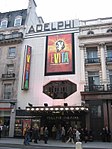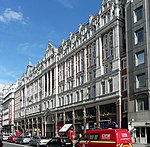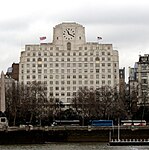Green Room Club
1877 establishments in EnglandGentlemen's clubs in London

The Green Room Club was a London-based club, primarily for actors, but also for lovers of theatre, arts and music. It was established in 1877 in a restaurant in Piccadilly Circus, and moved to premises on Adam Street in 1955, where it remained until its closure in 2004. The club's name was not trademarked, and there have been at least two attempts to "re-found" a version of the club in new premises.
Excerpt from the Wikipedia article Green Room Club (License: CC BY-SA 3.0, Authors, Images).Green Room Club
Adam Street, City of Westminster Covent Garden
Geographical coordinates (GPS) Address Nearby Places Show on map
Geographical coordinates (GPS)
| Latitude | Longitude |
|---|---|
| N 51.509761111111 ° | E -0.12235833333333 ° |
Address
Richard Arkwright
Adam Street 8
WC2N 6RJ City of Westminster, Covent Garden
England, United Kingdom
Open on Google Maps









